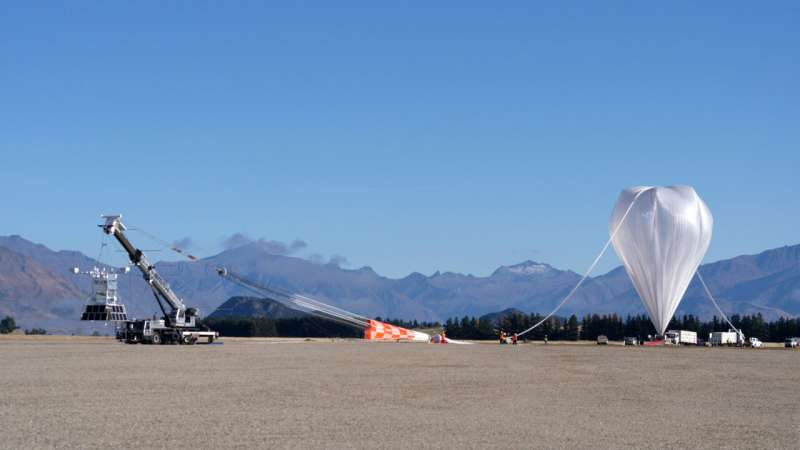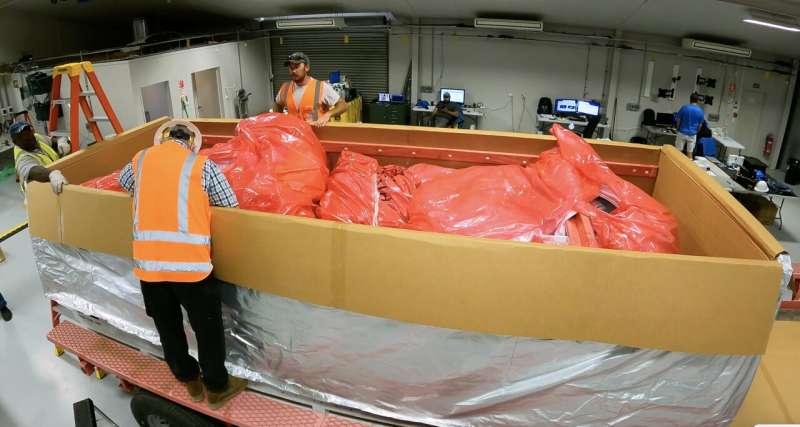NASA balloons return to New Zealand with super pressure balloon test

NASA's Scientific Balloon Program is back in Wanaka, New Zealand, for another flight test of its super pressure balloon, or SPB, technology to support science missions for longer flight durations, with flights running up to 100 days.
The team is targeting early May for the balloon launch, the fourth test launch from Wanaka Airport since NASA began balloon flight operations there in 2015.
NASA last launched from Wanaka in 2017. The team had traveled to New Zealand in 2020 to begin preparations for an SPB flight but ultimately canceled the campaign due to the coronavirus (COVID-19) pandemic. "We are on the cusp of perfecting our SPB balloon technology, which is poised to expand opportunities for all sorts of science and technology missions by providing relatively low-cost, near-space access for long-duration flight times at mid-latitudes," said Debbie Fairbrother, chief of NASA's Balloon Program Office. "For certain types of science, we can achieve the same results on a balloon that could only otherwise be achieved by flying into space on a rocket. Certifying the balloon as a long-duration flight vehicle is key to supporting bigger and more complex science missions in the future."
Past SPB flights have led to new processes and procedures for constructing the upper and lower fittings of the balloon to ensure the balloon stays pressurized despite the stresses from gas expansion and contraction that occur during the heating and cooling of the day-night cycle. In addition, NASA has made improvements on the launch collar electronics. The launch collar is the mechanism that holds the balloon film together after release of the balloon bubble from the spool—the collar is released just before launch of the payload. The science and engineering communities have identified long-duration balloon flights as playing an important role in providing inexpensive access to the near-space environment for science and technology.

NASA conducts SPB launches from New Zealand in collaboration with the Queenstown Airport Corporation, Queenstown Lake District Council, and Airways New Zealand. After this year's flight, the team plans to return to Wanaka in 2023 for two super pressure balloon flights, each with its own dedicated science mission of opportunity.
The SPB is an 18.8-million-cubic-foot (532,000-cubic-meter) pressurized flight vehicle designed to float at a constant density altitude despite the heating and cooling of the day-night cycle. This pressurization, coupled with the stratospheric conditions in the southern hemisphere, enables long-duration flights.
The balloon is helium-filled and about the size of the Forsyth Barr Stadium in Dunedin, New Zealand, when fully inflated at its operational float altitude of 110,000 feet (33.5 kilometers). Wanaka is NASA's dedicated launch site for mid-latitude, long-duration balloon missions.
Alongside the New Zealand campaign, NASA's Balloon Program is concurrently preparing for three balloon launches from Sweden, flying science missions using NASA's workhorse zero-pressure balloons. Those missions will fly across the Atlantic Ocean to land in northern Canada. NASA has additional balloon flights planned later this year from the agency's launch site in Fort Sumner, New Mexico, and from Antarctica.
NASA's Wallops Flight Facility in Virginia manages the agency's scientific balloon flight program with 10 to 15 flights each year from launch sites worldwide. Peraton, which operates NASA's Columbia Scientific Balloon Facility (CSBF) in Texas, provides mission planning, engineering services, and field operations for NASA's scientific balloon program. The CSBF team has launched more than 1,700 scientific balloons over some 40 years of operations.
Provided by NASA's Goddard Space Flight Center





















